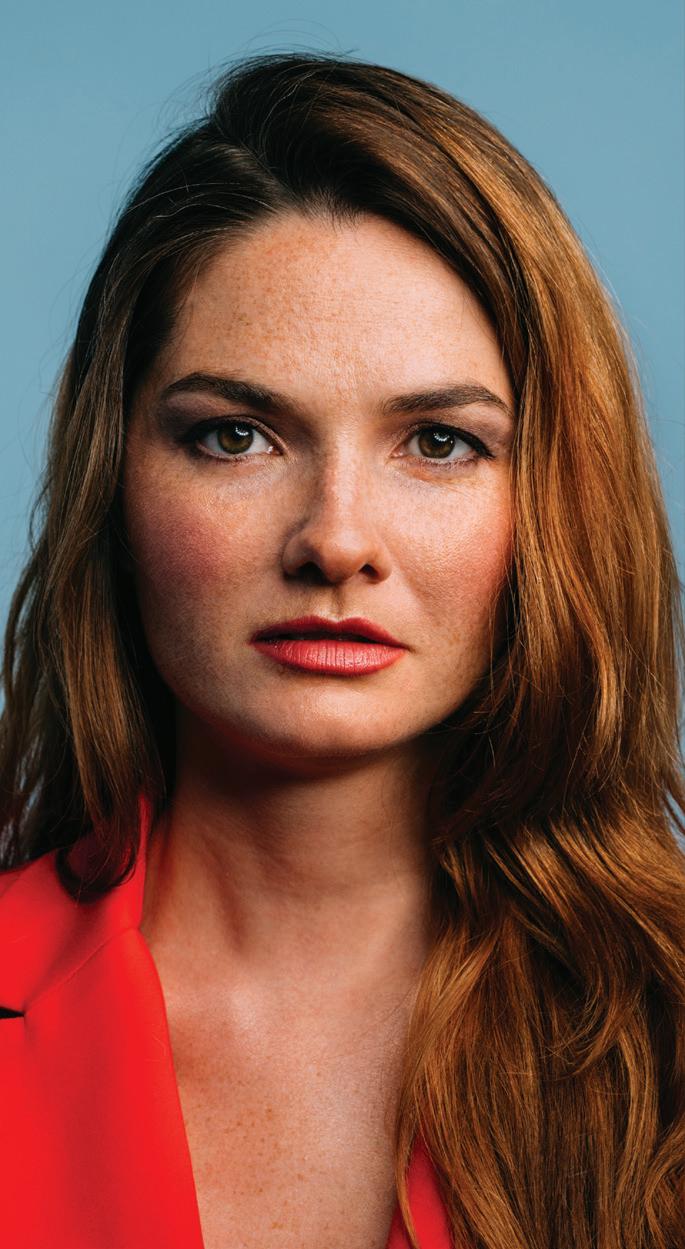
3 minute read
Rebecca Barbaro Sant
The devil is truly in the detail
Rebecca Barbaro Sant, Creative Partner at the Authentic Brief, suggests what trade shows will look like when they eventually return, and explains what companies can do to attract more customers
WHEN DO YOU THINK TRADE SHOWS CAN MAKE A SAFE RETURN? As Covid-19 restrictions are being lifted, there is an immense amount of pent-up creativity and entrepreneurial spirit chomping at the bit waiting to be unleashed. Given the fact that commerce is at the heart of every community, it seems reasonable to assume trade shows will return sooner rather than later – and that they will be back with a bang.
WHAT WILL THESE TRADE SHOWS LOOK LIKE IN TERMS OF ISSUES LIKE SOCIAL DISTANCING AND SPECIAL DESIGNS? The pandemic forced everyone to reassess how we share space and communicate with each other. Across generations, Covid-19 has elicited different responses, and what Generation Y views as the new normal, Generation Z knows simply as “normal.”
Catering to such diverse visions of “normality” poses many challenges for trade shows, but one thing is certain: the virtual and the physical have never been more inextricably linked than in the post-pandemic world.
The visionary, trend-setting trade shows of today have already started to straddle both the digital and the analogue, the augmented and the literal, to reach a broader swathe of audiences.
So what might this look like? Well, because we know visitors want security and comfort, astute trade show organisers could provide attendees with an app they could use to navigate the floor plan, for example. More than just a map, it might also include vital information like a live-view number of people at each socially distant location, and designated “safe zones” for space and respite.
Imagine the potential networking opportunities an app like this could facilitate too. Discreet messaging features, meeting scheduling and timetable displays. It could also enhance the scope of marketing for the stalls, because it would provide a continuous digital point of contact throughout the customer’s journey, well before they visit the stand or stall.
IS IT ALWAYS THE COMPANY WITH THE BIGGEST OR BEST STAND THAT ATTRACTS THE MOST PEOPLE AT TRADE SHOWS? I’ve seen really tiny stands nominated for awards because of their ingenuity, use of space and immersive power. And I’ve seen massive impressive stands sit empty for most of the duration of a conference.
Stand design is, as with all branding, an exercise in storytelling. And as with every story – from the Hollywood blockbuster to the independent arthouse film – it will fail at the outset unless it has a well-rounded and credible beginning, middle and end. If those elements are present and well-executed in your stand, then you'll have a winner.
In short, it’s not the size of your stand, but how you use it.
DO COMPANIES WITH SUCH STANDS LOOK LIKE THEY ARE OVERCOMPENSATING FOR A LACK OF SUBSTANCE? In theatre and film, the general rule for storytelling is: everything that happens on stage and screen needs to happen for a reason. Similarly, everything that tells the story of your brand needs to be authentic to your mission statement and business goals
There’s absolutely no point, for example, in building a stand to promote your security or privacy services yet not offer discreet rooms within which to have important talks with visitors. Similarly, it would be comical to set up a gaming stall that includes Virtual Reality Goggles and Wii games to encourage play and interaction, only to decorate it with fragile items like glass bottles and wine glasses.
Substance is being authentic and consistent with what you represent, and your stall is one of the many points of contact for your customers.
WHAT ARE THE MOST IMPORTANT ISSUES TO CONSIDER WHEN WORKING ON BRANDING AND STAND DESIGN? Your stand is not a display, and it is not a stall in the market. From the dress code of your employees managing it, to the fragrance or scent pervading the space, your stand is an experience – and one that can leave a lasting impression on your customer. From the location of your merchandise, to your choice of music, the texture of your chairs, to the height of your desk, the thickness of your curtains, to the visuals on your monitors and much more – the devil is truly in the detail.










